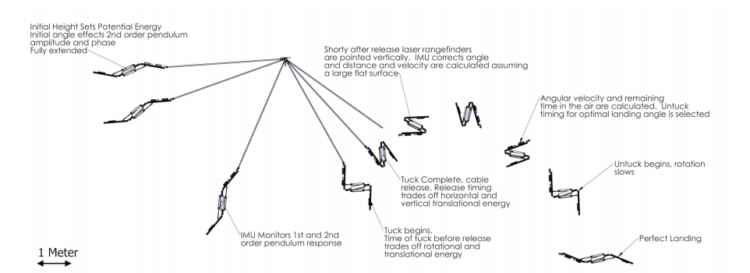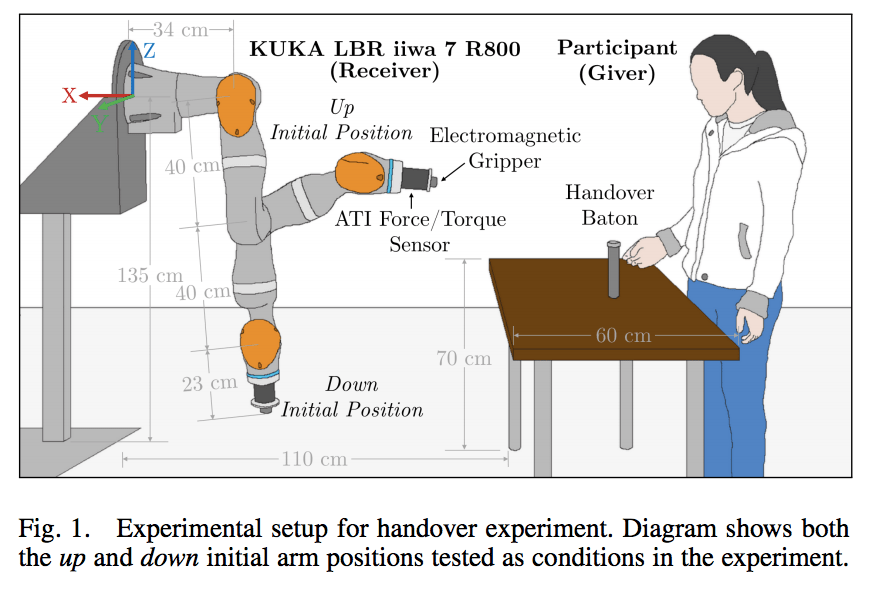Ever since the première of “Steamboat Willie” in 1928, The Walt Disney Company has pushed the envelope of imagination. Mickey Mouse is still more popular worldwide than any single human actor. In fact, from that one cel an entire world of animated characters was birthed. The entertainment powerhouse demonstrated last week a new generation of theatrics with a flying robot-like stuntman (hero pause and all) that is destined to become a leading player in the age of autonomy.
In the words of Dr. Morgan Pope of Disney Research, “We’d like to do something that’s not just human, but beyond human… The hope here is that we’re delivering something physical and tangible, as opposed to virtual and digital.” The research of creating the “beyond human” could field more important products than just theme-park animatronics. According to Dr. Pope’s research, the “Stickman” (video above) is a “two-degree freedom robot that uses a gravity-driven pendulum launch and produces a variety of somersaulting stunts.” By leveraging the physics of the streamlined design the robot is able to swing “through the air on a pendulum, ‘tucks’ to change its moment of inertia, releases, ‘untuck;” to reduce its spin, and gracefully lands on its back on a foam mat.” The robot’s dynamics are controlled by “an IMU [inertial measurement unit] and a laser range-finder to estimate its state mid-flight and actuates to change its motion both on and off the pendulum.”
In an IEEE Spectrum article authored by Dr. Pope, the scientist shares his inspiration for Stickman – the gold-medal gymnast Simone Biles. In describing Biles signature move, Pope writes, “It’s a beautiful example of how the seemingly simple physics of ballistic motion, completely governed by a relatively simple conservation of angular momentum, can produce amazing and unexpected results.” Beyond replacing movie stuntmen with pendulum swinging robots, Disney research aims to leverage its platform to accomplish two major objectives: 1) teach science and engineering and 2) push the boundaries of what is possible with machines. Dr. Pope exclaims, “We saw two potential benefits of building robots that could perform acrobatic stunts while aloft. First, a robotic performer can answer questions about how a performance is accomplished that are more difficult to answer with a human performer… Second, the force, speed, and precision required to execute acrobatic maneuvers push the limits of robot capability in a way that has the potential to be relevant to the broader field.”
Disney’s pursuit of science is not just for academic amusement but offers broad benefits today for the mechatronic industry. Parallel to Dr. Pope’s work with Stickman, Disney Research published another report on human-to-robot handovers. In their experiment, the researchers examined how robot behaviors influence human interactions in an effort to facilitate greater trust between people and machines. The paper states: “We find the robot’s initial pose can inform the giver about the upcoming handover geometry and impact fluency and efficiency. Also, we find variations in grasp method and retraction speed induce significantly different interaction forces.” The Disney team created a “Robot Social Attributes Scale (RoSAS)” that could be useful for future collaborative robot deployments. The study concluded that “ratings of the robot’s warmth linearly increased over repeated interactions, while discomfort simultaneously decreased. This suggests that the more people interact with the robot, the more they develop positive attitudes towards the robot. Both warmth and discomfort are known factors in the determination of trustworthiness of both humans and robots.” The researchers hope that their work will be used to address future challenges with handing objects between humans and robots, by providing ” inexperienced users with additional feedback information to improve legibility of robot behaviors during handover and other interaction contexts – e.g., audio or haptic feedback through wearable devices.” Curiously, the team also suggests that their “human-centered approaches” could even speed the adoption of social robots by leading to more mindful designs, programmed interactions, and fluid robotic movements.
Disney Research is not the only division within the multi-billion dollar entertainment conglomerate nurturing hardware invention. Three of the last four cohorts of the Disney Accelerator have including robot companies: Sphero (2014), Hanson Robotics (2016), and Savioke (2017) . Each of these startups has created new paradigms of human-social interactions, from STEM-centric toys to life-sized humanoids to autonomous delivery platforms. In addition to providing capital, mentorship and resources, Disney offers a playground of synergies and market opportunities. For example, the most popular Sphero products are the licensed characters from Star Wars, Pixar, and Marvel. Hanson Robotics is under contract to create humanoids modeled after Disney’s iconic characters and Savioke is piloting its Relay robotic delivery system with Disney World Resorts. The incubator has also backed a number of chatbot, AI software, consumer hardware and other emerging technology companies that are being harnessed throughout the brand.
For the past fifty years Disney has been utilizing robots, many still with hydraulic actuators to enhance the guest experiences of its theme parks. Charged with managing the future of these mechanical characters is Martin Buehler, Executive R&D Imagineer at Walt Disney Imagineering. Unlike the eighty PhDs working in Disney Research that wrestle with the theoretical, Imagineers are tasked with building and implementing new immersive rides today. Last September, Buehler delivered the keynote speech at RoboBusiness in Silicon Valley. In showing off his team’s latest pursuits with the worlds of Avatar and Star Wars (opening 2019), Buehler suggested that Disney’s art of storytelling and hardware could be a model for even mundane companies. Storytelling, Buehler noted, could further the deployment of social and collaborative robots within society by finally delivering on the promise of improved quality of life through automation. In particular, Buehler highlighted how robots with positive personalities could ease the pain of aging in place. Reflecting on Buehler’s presentation, I am reminded of Walt Disney’s famous quote, “That’s what we storytellers do. We restore order with imagination. We instill hope again and again and again.”





